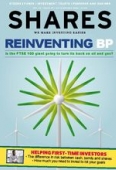Archived article
Please note that tax, investment, pension and ISA rules can change and the information and any views contained in this article may now be inaccurate.
Can you get your money out of a fund when you need to?

Since the collapse of funds run by the one-time star fund manager Neil Woodford, the question most fund investors want the answer to right now is ‘how quickly can I get my money back should I choose to sell?’.
The ease with which you can buy or sell an asset is defined as its liquidity. It matters because there might be a time when you need access to a big chunk of cash at short notice, and so it would invariably be important to be able to sell some or all of your holdings quickly.
You might also want to move your money because your risk profile has changed or you have seen a more compelling investment opportunity.
DIFFERENT LIQUIDITY LEVELS
It’s important to understand that some assets, like shares in FTSE 100 companies, are more liquid than others such as property or bonds, where there can be fewer people trading them and so it can take longer to find a buyer. In the case of property the buying and selling process is also inherently more time-consuming and complicated.
The Woodford debacle and subsequent spotlight on the industry means that funds are becoming more upfront on liquidity, such as publishing information on how long it might take to sell all their assets, should they be forced to.
So far we’ve only see a handful of asset managers publish this information and we would welcome greater clarity from the industry.
For example, Fundsmith Equity (B41YBW7) estimates in its latest monthly factsheet that it could liquidate 62% of its portfolio in seven days.
This compares with the two months it took for Aberdeen Standard Investments to liquidate its Emerging Markets Government Bond fund and return money to investors, which it had to do after two big clients decided to withdraw their funds.
Investing in open-ended property or even bond funds carries a higher risk that the fund manager won’t be able to sell enough assets in time to meet all requests from investors for their money back (also known as redemptions) because the underlying assets can be illiquid.
Dealing in several property funds had to be suspended in the wake of the market shock created by the Brexit vote in June 2016, in order to give the fund managers more time to sell assets at the best possible price.
WHAT HAPPENED WITH WOODFORD?
Those investing in Woodford’s open-ended equity funds would have, not unfairly, expected to be able to sell their investments the day they needed to, or the day after, as advertised. So not being able to get their money back quickly, with trading in the funds suspended for more than six months, was undoubtedly a huge shock.
A large part of the reason they couldn’t was that Woodford had invested in a lot more illiquid, i.e. hard to sell, stocks than people realised. Some were not quoted on any mainstream stock exchanges.
The Association of Investment Companies (AIC), which represents investment trusts, believes the liquidity problems suffered by Woodford and property fund investors has arisen due to ‘foreseeable failures of product design and inadequate regulation’.
Its chief executive Ian Sayers says: ‘Like a square peg in a round hole, daily redemption and hard to sell assets just do not fit together. It is this mismatch that threatens financial stability. The worst case is a vicious cycle of redemptions leading to further fund collapses and declining asset values.’
LIQUIDITY MONITORING
The concerns about liquidity are not lost on the investment fund industry, with many telling Shares the issue is a big focus for them.
Liontrust says some of its funds contain small cap stocks which can be more illiquid than larger companies. Yet the asset manager argues that not all illiquid small caps are the same, with it being easier to find a buyer for good, profitable companies that fit its investment criteria – low gearing, high cash flow return on capital, having an owner-manager culture and being a business that’s difficult to replicate.
Keith Skeoch, chief executive of Standard Life Aberdeen, says his company’s equity funds only invest in shares that can be traded on stock exchanges, with risk management a ‘central part’ of its investment processes, which includes liquidity monitoring undertaken by fund managers.
He adds: ‘Liquidity can be an issue in public market securities – both equity and bonds – which is why we’re very vigilant in monitoring it.’
BlackRock Special Situations (B3R25W6) fund manager Roland Arnold says liquidity ‘has always been front and centre in BlackRock’, adding that he has a monthly meeting to talk about liquidity and risk in his fund.
A spokesperson for Jupiter says liquidity has ‘always been a key consideration of our portfolio construction process as well as an integral part of risk oversight across our full fund range’.
LOOK AT THE ‘EMS’ FIGURE TO GUAGE LIQUIDITY
London Stock Exchange’s website publishes an Exchange Market Size (EMS) figure which gives you some guidance on how many shares in an individual company you can sell readily.
FTSE 100 constituent Vodafone (VOD) has an EMS of 10,000 which at a share price of 150p implies you would have no issue selling up to £15,000 worth of stock in one go.
Small cap pharmaceutical firm Synairgen (SNG:AIM) also has an EMS of 10,000 but its 15.5p share price means you may only be able to sell £1,500 worth of shares in a single transaction.
NEW RULES ON THE HORIZON
The Financial Conduct Authority (FCA), a regulator, is introducing rules that will force asset managers to improve their liquidity measures and disclosures from September.
It should see investors in certain types of open-ended funds investing in illiquid assets being provided with clear information on liquidity risks, and the circumstances in which access to their funds may be restricted.
Important information:
These articles are provided by Shares magazine which is published by AJ Bell Media, a part of AJ Bell. Shares is not written by AJ Bell.
Shares is provided for your general information and use and is not a personal recommendation to invest. It is not intended to be relied upon by you in making or not making any investment decisions. The investments referred to in these articles will not be suitable for all investors. If in doubt please seek appropriate independent financial advice.
Investors acting on the information in these articles do so at their own risk and AJ Bell Media and its staff do not accept liability for losses suffered by investors as a result of their investment decisions.

 magazine
magazine










